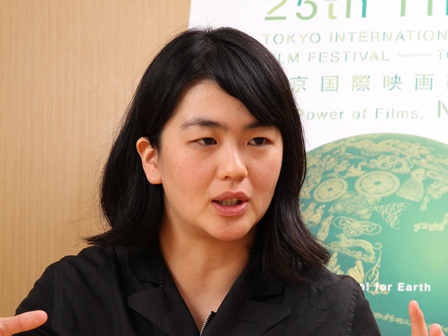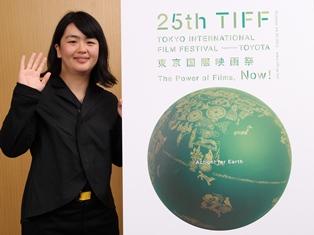Interview with Director Tomomi Ishiyama (“Last Days of Summer“)

Coming-of-age stories stress setting, since a young person’s self-image is greatly influenced by the place where he or she lives. Tomomi Ishiyama’s first feature, “Last Days of Summer,” centers on Mizuki (Mizuki Sugawara), a junior high school girl who lives in a remote mountain village. The title refers to the season when the story takes place, but also to the current stage of Mizuki’s life. She is leaving childhood behind, and adolescence holds special anxiety for her since her older sister was raped and killed when the sister was a teenager. Throughout the movie Mizuki is reminded of the dangers that come with sexual maturity through the rude attention of boys, the poisonous rumors of neighbors, and the normal hazards of the natural world.
As a coming-of-age story, “The Last Days of Summer” has little to do with its author. Ishiyama grew up in Tokyo and studied in New York. “It’s my desire to make a movie in an urban environment,” she says, “but my skills as a director are limited, and depicting any city is very complicated.” Ishiyama originally studied housing and architecture, and she sees films as structures through which people move. “Tokyo is just so vast,” she continues. “With New York you at least have the skyline, but I wouldn’t even know where to start with Tokyo, so I decided to go in the other direction and chose this closed-off, insular society in the mountains.”
In fact, Ishiyama is less interested in Mizuki as a protagonist than in her community. “I empathized with Mizuki, and I wanted to show her growth, how she developed as a human being,” says the director. “But I was more interested in the people around her. I like films in which characters stand out and do whatever it is they want to do and where the narratives don’t necessarily follow those characters’ desires. But if I made this film in that way there would probably be more drama–maybe Mizuki would have been raped, too, thus creating drama for the sake of drama. I intentionally avoided that. I did not want to make the whole movie about this one character. I wanted others to be able to affect what she’s doing. The world is not all about Mizuki.”
The script interweaves several storylines and themes, including a disease that’s decimating the forest, the traditional source of livelihood for the village; the attendant struggles of the village’s last sawmill, which has brought in outside workers whom the locals don’t trust; a local election that’s riding on the fortunes of a hot spring resort; reports of bears encroaching on the town; and the usual emotional confusion that comes with adolescence. However, because Mizuki is at the center, certain pre-conceptions dominate. Males are mostly dangerous, while women are mostly treacherous. “It was not my intention to characterize males in a certain way or females in a certain way,” Ishiyama says. “I just wanted to convey that there are various ways of looking at the world depending on the individual.”

But having grown up in the city Ishiyama admits that she herself had to overcome pre-conceptions she held about rural life, and her research took in a variety of interests regarding closed communities, from the way rumors spread to the persistence of superstitions, which she believes have value.
“Superstitions take on various forms in terms of storytelling and legends,” she explains. “There are stories told by people in positions of power. There are stories that come from common folk. And then there’s mythology. As to what sort of relevance they have to me, I don’t know, but I can at least say I find it all very interesting. Also, I think legends and myths, though they may not seem that important when you hear them as a child, tend to cling to you your whole life. They do have some sort of effect.” In the movie, bears represent both the mystery of superstition and the immediacy of nature. In one scene, we see the body of bear floating down the river, and in another a shadow of a bear attacking someone.
“I’ve always been interested in bear legends, especially the ones told by the [Indigenous] Ainu in northern Japan, who regard them as deities,” she says. “Before killing a bear, the Ainu would feed it what they ate, like rice. They would have a feast with the bear, which shows you that they were in awe of nature. This is folklore, but you can see it in the way Japanese people perceive nature. The relationship between nature and humans in Japan is unique, and it has shaped us and the way we live. That isn’t to say nature in Japan is more beautiful than it is elsewhere. I don’t know how much of this idea came out in the bear metaphor, but that’s the philosophy behind it.”
(Text by Philip Brasor)



















